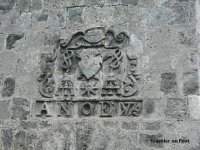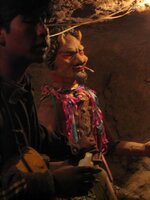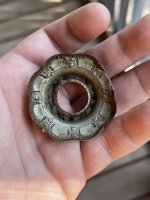desertmoons
Bronze Member
- Apr 16, 2008
- 1,067
- 168
Lamar,
I was wondering if you (or anyone else for that matter) might have a clue to the symbology of a European church carving.
Particularly,. the "hat" on top..and does that look like a hand on top the heart?
Duis Tower is the only info i have on where this is.
I was wondering if you (or anyone else for that matter) might have a clue to the symbology of a European church carving.
Particularly,. the "hat" on top..and does that look like a hand on top the heart?
Duis Tower is the only info i have on where this is.





 Sounds FRENCH... a church/tower in France in the "old" days; HAND of G*D blessing the HEART of "MAN"
Sounds FRENCH... a church/tower in France in the "old" days; HAND of G*D blessing the HEART of "MAN" 

 ) In fact, the superstition has become so large that many miners will not permit visitors to enter a mineshaft unless they've offered up a token sacrifice in order to appease El Tio. It's all a bunch of superstitious nonsense, but why take unecessary chances?
) In fact, the superstition has become so large that many miners will not permit visitors to enter a mineshaft unless they've offered up a token sacrifice in order to appease El Tio. It's all a bunch of superstitious nonsense, but why take unecessary chances?



